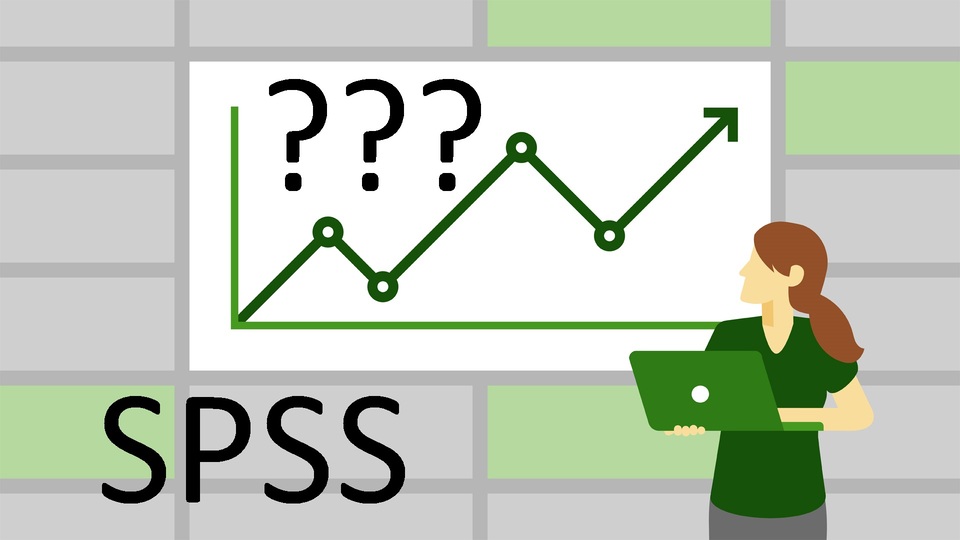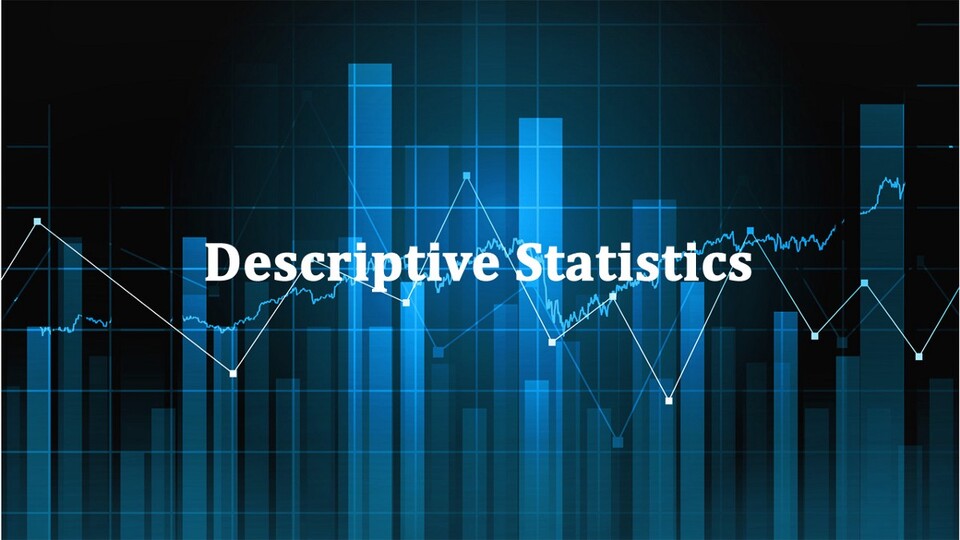statistical analysis using spss It is one of the statistical applications that operate under the umbrella of Windows, and it is a set of lists and tools through which the data obtained by the scientific researcher through questionnaires, interviews, or observations can be entered, and then analyzed (statistical analysis methods).
Statistical analysis using spss relies on digital information, and the program is characterized by its great ability to process the data that it is provided with, and it can be used in all scientific research methods.
Statistical data analysis using spss program is provided with data by placing symbols that represent it, after which the appropriate test model is chosen for the data, and the variables that the scientific researcher wishes to analyze are determined.
what is statistical analysis?
Statistical analysis methods are defined as the science of collecting, processing, and presenting large amounts of scientific data to discover basic patterns and trends and to extract information useful for scientific research.
Statistics are applied every day and in all fields, to enable its users to make informed decisions. In addition, it is the process through which the researcher talks about a community or a research sample, and explains the characteristics of this community or sample as well as their advantages.
Statistical analysis using spss software is a kind of quantitative research and science that follows the science of economics, which seeks to identify data, and quantitative data mainly includes descriptive data.
Such as survey data and monitoring data, which individuals use to count their properties and the properties of people on their lands to impose taxes according to property and other goals.
Advanced statistical analysis using spss is a very important field, whether in ancient times or in modern society, as statisticians represent evidence for learning by studying and analyzing common problems.
As well as inferring from available data that can lead to conclusions on which decisions and solutions are made, as they lead to sound scientific conclusions.
It is worth noting that a large number of programs are available to carry out statistical analysis of data which are known as statistical analysis tools, such as SPSS and Mini-Tab.
And these programs help to understand what to do with the data and how to interpret the results, in addition to making the statistical analysis process as smooth and easy as possible.
What are the types of statistical analysis?
The types of statistical analysis methods differ according to some variables, such as:
- Types of statistical analysis according to the nature of work.
- Types of statistical analysis according to the method of analysis.
Types of statistical analysis according to the nature of the available data:
We can classify the types of statistical analysis methods according to the nature of the data into two parts:
1- Descriptive statistical analysis: It is one of the most prominent types of statistical analysis, and it deals with data that cannot be measured numerically. In an attempt to extract summaries that express it.
And then it can be presented in a brief manner, and this is used when dealing with phenomena or descriptive or qualitative studies, such as: family problems, or caring for the elderly, autism, or social backwardness.
2- Quantitative statistical analysis: Quantitative statistical analysis is among the types of statistical analysis, which are related to numerical or enumerated data, and can be dealt with mathematically and mathematically.
Such as the annual profits of a commercial enterprise, bank accounts, or figures related to natural sciences. Quantitative statistical analysis is characterized by accuracy in the results.
It provides clues closer to certainty and facilitates the process of making comparisons between many values, and this is used in natural sciences such as: physics, astronomy, and chemistry.
The types of statistical analysis are also classified according to the method or method used in the analysis process:
1- Manual statistical analysis: Manual statistical analysis can be used in the event that the study population is limited in number, in the event that the researcher wants to identify some of the simple measures.
Such as probability distributions, range, median, mode…etc., however, This is difficult to do, and it takes large periods of time in the event that the study population is large in terms of size.
2- Electronic statistical analysis: It is the preferred type of statistical analysis to be used, in order to save effort and time, ease graphic presentation, and then come up with accurate results.
During that period, there are a good number of electronic applications that are installed on computers for the purpose of statistical analysis using spss.
Among the most important of these programs: are SPSS, EXCEL, E.VIEW, SAS, R, and MINITAB, and each program has a set of menus that contain different icons for dealing with data.
What are the 5 basic methods of statistical analysis?
There are some steps that the researcher follows while carrying out the statistical analysis methods, and these steps can be shortened in 5 basic steps, which are:
Step 1: Write your hypotheses and plan your research design to collect valid data for statistical analysis, you first need to define your hypotheses and plan your research design.
1- Writing statistical hypotheses
Often the goal of the research is to investigate the relationship between variables within a population. You start with a prediction, and you use statistical analysis to test that prediction.
A statistical hypothesis is a formal way of writing a prediction about a population. Each research prediction is reformulated into null and alternative hypotheses that can be tested using the sample data. While the null hypothesis always predicts no effect or no relationship between the variables.
2- types of designs
In experimental design, you can evaluate a cause-and-effect relationship (for example, the effect of meditation on test scores) using statistical comparison or regression tests.
In an associational design, you can explore relationships between variables (for example, parental income and GPA) without any assumption of causation using correlation coefficients and tests of significance.
In a descriptive design, you study the characteristics of a population or a phenomenon (for example, the prevalence of anxiety in US college students) using statistical tests to draw conclusions from a sample of data.
Step 2: Collect data from the sample
In most cases, collecting data from every member of the population you are interested in studying is either too difficult or too expensive. Instead, you will collect data from a sample.
Statistical analysis allows you to apply your results outside of your sample as long as you use appropriate sampling procedures. You should target a sample that is representative of the population.
Sampling for statistical analysis
There are two main ways to select a sample:
- Probability sampling: Each member of the population has the opportunity to be selected for the study through random selection.
- Non-probability sampling: Some individuals are more likely to be selected for the study than others due to criteria such as convenience or voluntary self-selection.
- Theoretically, for highly generalizable results, you should use the probability sampling method.
- Random selection reduces sample bias and ensures that the data from your sample is, in fact, typical of the population. Parametric tests can be used. To make strong statistical inferences when data is collected using probability sampling.
- In practice, however, it is rarely possible to collect the perfect sample. While non-probability samples are likely to be biased. Except that it is easier to recruit and collect data from them. Non-normative tests are more suitable for non-probability samples but lead to weaker conclusions about the population.
Step 3: Summarize your data with descriptive statistics. Once you have collected all of your data, you can examine it and calculate descriptive statistics that summarize it.
Examine your data There are various ways to examine your data, including the following:
- Organizing data from each variable in frequency distribution tables.
- Display data from a key variable in a bar chart to display the distribution of responses.
- Visualize the relationship between two variables using a scatter plot.
By visualizing your data in tables and graphs, you can assess whether your data follows a skewed or normal distribution and if there are any outliers or missing data.
Step 4: Test hypotheses or make estimates with inferential statistics
The number that describes a sample is called the statistic, while the number that describes the population is called the parameter.
You can draw conclusions about population parameters based on sample statistics. Researchers often use two main methods (simultaneously) for making inferences in statistics.
Step 5: Interpret your results
The final step in statistical analysis is the interpretation of your results.
In hypothesis testing, statistical significance is the main criterion for forming conclusions.
You compare your p-value to a group level of significance (usually 0.05) to decide whether your results are statistically significant or not significant.
It is unlikely that the statistically significant results arose due to chance alone. There is very little chance of such an outcome occurring if the null hypothesis is true in the population.
What are statistical analysis examples?
There are many statistical analysis examples:
An example of statistical analysis in geography among the sciences that statistical analysis deals with is geography. One of the tasks of statistical analysis in geography is to show the relationship between crops and the environmental variables that affect them.
Such as temperature, humidity, drought, and rain. statistical analysis methods study the suitability of these variables in a specific environment for crops that will It is cultivated in this environment, that is, the geostatistical analysis focuses on spatial analysis.
The field of geography, through statistical analysis tools, aims to reach geographical generalizations in the form of laws, rules, and theories.
To show the forms of spatial variation, through the use of the quantitative method, and the use of statistical analysis methods in the field of geography began in the early twentieth century.
statistical analysis methods in geography were limited to collecting spatial information on the distribution of population, economy, and climate, and it assisted in the process of integrative analysis.
In the seventies, geographical statistical analysis had some drawbacks, such as researchers exaggerating the use of statistical analysis in their research at the expense of the theoretical side.
What are the three 3 simple and useful statistical measures?
Statistical measures are a set of statistical operations, the main use of which is the analysis of all data; This is to help reach a set of results, and a set of calculations are performed through scale tools and data collection, and then the steps of statistical calculations are started.
1- Measures of Central Tendency
Measures of central tendency are used to describe the assemblage point of all observations. These measures were devised by the English researcher Francis, and we will learn more about this type of measure through the following:
1- First: the Average
The Average is one of the types of statistical measures, and it is calculated by calculating the sum of observations in one variable, and then we divide the result by the sum of the number of observations for this type of variable.
2- Second: the mediator
The median is also one of the statistical measures that fall under the category of measures of central tendency.
And it can be defined as the value that is in the middle of the values, and through the median, all values are divided into two halves, and each of the two halves is equal.
3- Third: the mode
A mode is a value that is repeated a large number of times, or the most frequent value among all the data, and the mode has many classifications.
2- Measures of dispersion
Dispersion measures are also considered one of the statistical measures that are frequently used to analyze data and to obtain results. Among the most important measures of dispersion are the following:
1- First: rane
It can be defined as the distance between the highest and lowest scores in a distribution. Unfortunately, the range is often misleading.
As it is based on the highest and lowest scores, and there is no information about the mean (between the extreme scores at the top and bottom).
2- Second: the standard deviation
As we have seen, range and interquartile range determinants abound and fail to use all signs in the distribution. Nor do they provide us with information about the mean or the deviation from it.
3- Third: the average deviation
This type of statistical measure is used to know the average the deviation of values from their average, and the average deviation is calculated through the following steps:
- We calculate the arithmetic mean.
- Calculate the deviation of the values from their mean.
- We ignore signs of deviations.
- We collect all deviations.
- We value the sum of the deviations over the number.
3- Measures of correlation
Correlation measures are also considered one of the most important statistical measures, and these measures highlight the strength of the relationship between variables and each other.
1- First: the correlation coefficient
There are many types of these measures, and the most important type is the Pearson correlation coefficient, and this coefficient is used when calculating the linear regression equation.
2- Second: Statistical analysis
After completing the initial analysis of the data, the researcher must now take into account the statistical procedures, and this stage of the analysis is based on some probabilistic models and statistical tests.
What are the 4 statistical tests?
Parametric statistical tests in scientific research are called parametric tests, and they are tests with a normal distribution of data.
Parametric tests are the most common and most widely used statistical tests because they use all information and data and therefore have the ability to achieve increasingly large results. Parametric tests are of several types: the following:-
t-test
It is the standard statistical test most used in scientific research, and the t-test can be defined as the test through which the researcher can discover the significance of the statistical difference.
Between the mean of the first sample and the second sample and calculate the deviation between one sample and the other, and three types of t-tests are classified based on the sample used in the test.
Types of t-test
1-One-sample t-test
The researcher uses the t-test for one sample instead of the z-test if the standard deviation of the population is unknown, that is, to compare the sample mean with the value of the population.
2-t-test for two independent samples
Here, the researcher uses the t-test for statistical analysis in the event that the comparison is between two samples and not one sample, but these two samples follow the same variable because the two samples differ.
3-t-test for two related samples
Like the t-test for two independent samples, but here the difference is that the two samples are the same, but the variable is the one that differs.
4-z-test
It is one of the types of parametric statistical tests, where the z-parametric statistical analysis test aims to compare the value of the statistical population with the arithmetic mean of the population sample.
The z-test for standard statistical analysis also aims to assess the percentage of differences in the characteristics and characteristics of a sample with respect to the characteristics of the target statistical population of which this sample is a part.
The sample is evaluated on the basis of determining the alternative hypothesis and the null hypothesis, by calculating the z values, then making the comparison, and finally issuing the decision of rejection or acceptance, and extracting and showing the result.
how to perform statistical analysis using spss?
the program consists of four sections: the command function, the data view, the variable view, and the output navigator.
1- Command list:
It is the place for orders, where the user of the statistical analysis program (SPSS) can choose the command through (icon) for each statistical process.
In order to display the results in the list of reports, where the list of commands includes 9 main commands without the (help) command. A number of sub-commands branch out from the list of com statistical analysis using spss minds.
2- Data list:
It is the place designated for adding and canceling data for each variable, where the statistical data analysis using spss represents the variable in a column (column) to give the name (VAR) with a number starting from 1 to 100000.
And in terms of lines, it represents the number of observations for each Variable, where conversion takes place between each of the views and variables by pressing the data view and variable view keys.
3- Variable definition screen:
Statistical analysis using spss software double-clicks the column in order to define the variables, or by pressing the variable view key, which is the key at the bottom of the screen; In order for another screen to appear for defining the variables.
When advanced statistical analysis using spss determines the name of the variable and the type and size of the special coding.
The statistical analysis using spss finds the coding when clicking on the (values) column, and then the user selects the value of the symbol as well as its description By pressing the (add) key for each symbol.
4- List of reports and results:
This list is specialized for displaying results and reports. Switching between the results screen and the data screen is done by pressing the (window) command.
Statistical data analysis using spss is launched by selecting the (start) command through the main list, which is (programs), and then the (SPSS) user selects (SPSS).
In conclusion,
statistical analysis using spss one of the modern methods for conducting statistical analysis methods, Moreover there are many models are available, which were included in our paragraphs above.
Share via:


